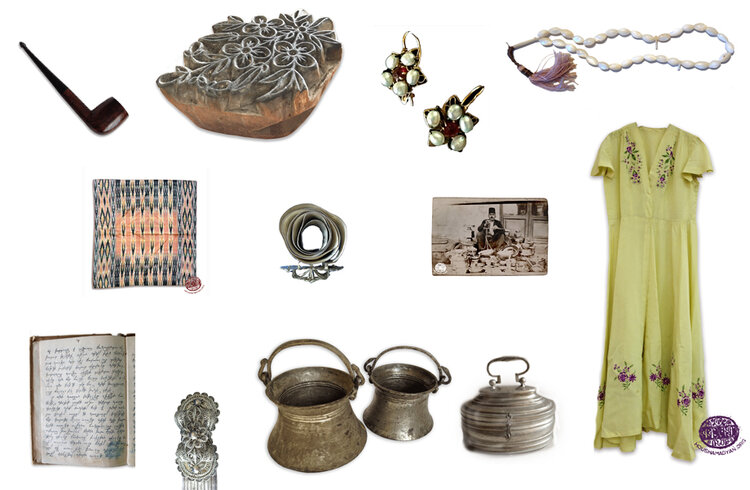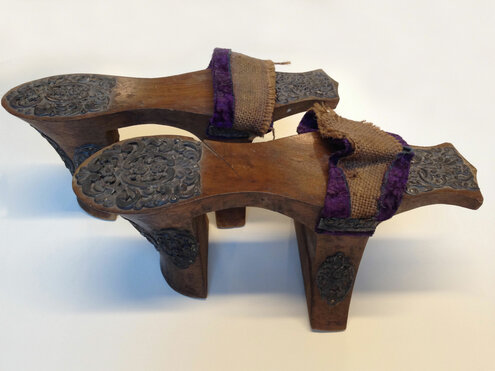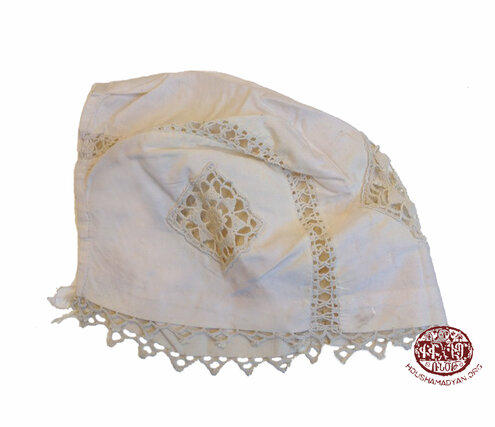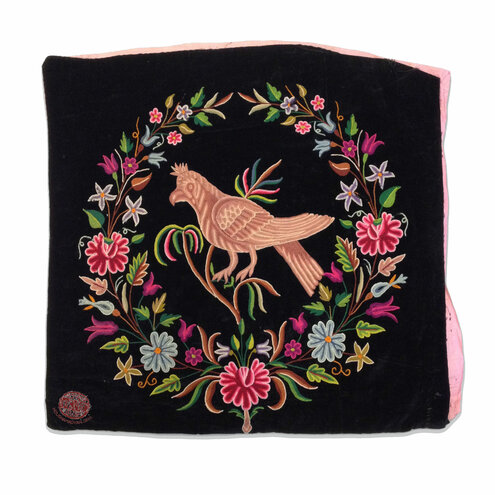Silva Özyerli collection - Istanbul, Turkey

During the event organized by Houshamadyan at the Hrant Dink Foundation in Istanbul in December 2015, we were approached by Silva Özyerli, who brought with her a complete bath collection from her native Diyarbakir/Dikranagerd, which she had inherited. For many years, Silva had lived in the Christian quarter of Diyarbakir (Gavur Mahallesi), until the 1980s when she and her family moved to Istanbul. For many years she made use of the public baths in her native city, and she provided us with detailed information regarding this unique cultural practice.

Bath collection from Diyarbekir/Dikranagerd

1) Bath cloth for wrapping (fouta). The fouta was only intended for the bride. She would wear it before entering the bath.
2) This thick quilt-like bath cloth was placed underneath the boroda. Its size would vary depending on whether it was intended for children or adults.
3) Bath cloth, part of the bath set (boroda). This white bath cloth was used after the bath was over, they would put it in the courtyard and sit on it while enjoying dried fruits and nuts.

Dowry Bundle "bohça"
Silva Özyerli inherited this collection from her mother, Zora Mikayelian-Diken (1934-1986), who in her turn had inherited most of the items from her mother, Tyume. This latter was married to an Assyrian man name Ibrahim, whose mother’s family hailed from the village of Mermer, near Diyarbakir. Silva’s father, Hovsep Giragosian (who was later forced to change his family name to Diken) was a native of the Sassoun area, and married Zora in Diyarbakir. In 1950 Silva’s grandmother and a large chunk of the family migrated to Syria, where they eventually settled in the town of Kamishli, in the northeast of the country.
Dowry bundle, bohça. This big dowry (ojid) bundle was brought to the house of the groom in a solemn ceremony before the wedding. The contents of the bundle were the dowry of the bride-to-be, it was also sometimes called çeyiz, halav. The dowry comprises all that the bride will need, these were usually made by the bride herself. There would be clothes, embroidery, bed covers etc. The bride-to-be would also add gifts for the groom's family, things such as clothes, napkins, socks etc.


This apron, table cloth and women's underwear were all part of the dowry. It was customary to have various such pieces in the dowry of the bride-to-be, sometimes as many as a family would need for many years to come. All have hand embroidered details on them. The women's underwear is typical of what women wore at the time, it is wide and had adjustable straps.































